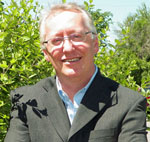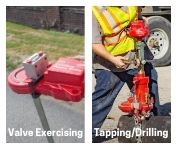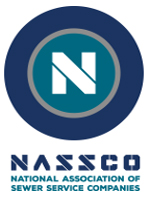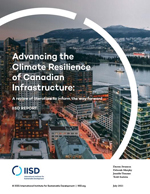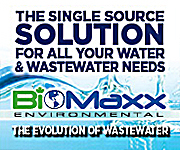 |
||||||||||||||||||||||||
| Subscribe | Past Issues | www.cwwa.ca | Water Source Magazine | ||||||||||||||||||||||||
|
CWWA News
Federal Initiatives
The government has called an election for September 20, 2021. This means any outstanding legislation will be lost, and need to be reintroduced once the new government is formed. Any new or pending federal initiatives or programs are paused as well. This means work towards the Canada Water Agency for example are on hold, and may not resume depending on the party that wins the election. Several news sites have breakdowns of the party platforms heading into the election. For example Macleans has an extensive breakdown (https://www.macleans.ca/rankings/2021-federal-election-platform-guide/). Much of the focus of the campaign is economic recovery from the pandemic and addressing climate change. Measurements Canada is currently consulting with water meter manufacturers, water distribution utilities and water meter end users to obtain data on current water measurement approaches and water meter billing practices in the Canadian marketplace. This enactment requires that national targets for the reduction of greenhouse gas emissions in Canada be set, with the objective of attaining net-zero emissions by 2050. Other than section 23, which pertains to an annual report, the Bill came into effect with Royal Assent.
I was introduced recently to the leadership team at NASSCO – the group that represents the Underground infrastructure industry in the US. They have quite a few Canadian members as well, so we thought there could certainly be opportunities for cooperation. Just for interest, they shared this 2021 Water Policy Statement as part of their advocacy work: Here’s how they describe themselves at their website www.nassco.org Welcome to the source of education, technical resources and advocacy for the underground infrastructure industry. Join NASSCO and its 650+ member organizations to set standards, promote trenchless technologies and protect our communities through the proper assessment, maintenance and rehabilitation of buried assets
The 2021 National Water and Wastewater Conference is going virtual! After much discussion with our members and partners, we felt that the best way to bring our members a quality conference program was to offer it exclusively online. The online conference is planned for January/February 2022, with webinars taking place on Tuesdays and Thursdays, spanning the many topics our Association follows. Watch our website for the webinar schedule, registration and sponsorship opportunities. We’ll be in Halifax, Nova Scotia in 2022 and will finally make it to Niagara Falls in 2023. Member News
Earlier this summer we shared with you “Advancing the Climate Resilience of Canadian Infrastructure” by International Institute for Sustainable Development (IISD) and Infrastructure Canada. They recently shared that the French version is now available! This summer has shown us that Canada’s climate is changing. From wildfires to drought to flooding to melting sea ice, we are seeing first-hand the detrimental impacts of climate change on communities, ecosystems, the economy, and our infrastructure. While steps have been taken to increase the resilience of our built infrastructure, 1/3 of Canada’s public infrastructure remains in poor condition. Re-visit the English report and infographics (here and here), which is now being included as a resource to inform Canada’s National Adaptation Strategy.
This International Institute for Sustainable Development (IISD) report reviews the current literature on climate change hazards, impacts, and adaptation options. On July 11, 2021, the National Research Council of Canada released National guide for wildland-urban-interface fires: Guidance on hazard and exposure assessment, property protection, community resilience and emergency planning to minimize the impact of wildland-urban interface fires. This new 734-page report from Natural Resources Canada examines issues related to Canada’s ability to adapt to climate change. A digital interactive version of the report is available at: www.ChangingClimate.ca/National-Issues. Explore case stories from the report at:https://changingclimate.ca/case-studies/#reports. Snippings & Clippings
ESE Magazine Water treatment plant upgrades have received funding for projects in New Brunswick, Saskatchewan, and the Northwest Territories. The biggest ticket item among them includes $5.9 million in federal funding for the Saskatchewan Town of Outlook, where local officials are planning to add UV disinfection to the water treatment plant, while improving flow through its reservoirs. Also in the works is a new raw water intake in the South Saskatchewan River. Outlook is contributing more than $1.9 million to the plant’s upgrades. ESE Magazine The federal government is investing $4.2 million in a Quebec-based cellulose nanocrystals company to support the innovation of an eco-friendly alternative product to replace microbeads for the consumer market. Water Canada The Government of Canada has announced an investment of $20 million to support the development and commercialization of natural products and technologies, including water and wastewater technologies. KNUW It’s Trevor Flynn’s job to keep the local tap water from smelling like dirt. It’s a pleasant enough scent after a good rain storm. It goes down less easily in glass. Climate change makes Flynn’s job harder. It’s triggering days of triple-digit temperatures and more times when the breeze takes a holiday. That, in turn, breeds ever bigger blooms of blue-green algae. Water Canada More than $38.5 million in federal-provincial funding for two dozen new infrastructure projects across Alberta. Of the $38.5 million, Red Deer will receive over $22.2 million in federal funding which will improve the City’s flood prevention infrastructure, modernize the fire training facility, renovate the Cultural Services Centre, and more. These projects will help the City adapt to the effects of climate change, increase emergency services training, and support cultural and artistic projects. Water Canada Just south of the border, a water utility produces 20 million gallons of potable water daily. The water is dispersed through 1,000 kilometres of pipes for the benefit of 130,000 consumers. Vaguely aware of growing cyber security threats in the water industry, the utility invited a technology firm to perform a security audit. L.A. Times Problems at a Los Angeles sewage treatment plant that caused a massive spill into Santa Monica Bay last month have severely reduced the region’s water recycling ability, forcing officials to divert millions of gallons of clean drinking water at a time of worsening drought conditions, The Times has learned. MPR News A couple weekends ago, Cody Sheik was at a friend's wedding on Duluth's Park Point, sipping champagne down on the Lake Superior beach, when he spotted something unusual in the normally crystal clear water. Arizona Public Media A bill recently introduced in the U.S. Senate aims to provide billions of dollars to improve access to clean water in tribal lands. One of the senators who introduced the bill, Sen. Michael Bennet, D-Colo., wrote in the foreword of a report about tribal water access within the Colorado River Basin that one estimate states 48% of households within tribal lands lack clean water or sufficient sanitation. The Brussels Times Extreme weather events dominate the list of disasters in terms of both the human and economic toll over the past 50 years, according to a comprehensive analysis by the World Meteorological Organization (WMO) published on Friday. ESE Magazine The City of Regina’s attempts to fluoridate its water — as is done in many major Canadian cities — have failed many times over the years. But now that major upgrades are approved for the local water treatment plant, local officials are again set to debate the dental health protection measure in August. |
||||||||||||||||||||||||
